

Contributions from
The Museum of History and Technology:
Paper 5
Development of the Phonograph at
Alexander Graham Bell's Volta Laboratory
Leslie J. Newville
By Leslie J. Newville
The fame of Thomas A. Edison rests most securely on his genius for making practical application of the ideas of others. However, it was Alexander Graham Bell, long a Smithsonian Regent and friend of its third Secretary S. P. Langley, who, with his Volta Laboratory associates made practical the phonograph, which has been called Edison's most original invention.
The Author: Leslie J. Newville wrote this paper while he was attached to the office of the curator of Science and Technology in the Smithsonian Institution's United States National Museum.
The story of Alexander Graham Bell's invention of the telephone has been told and retold. How he became involved in the difficult task of making practical phonograph records, and succeeded (in association with Charles Sumner Tainter and Chichester Bell), is not so well known.
But material collected through the years by the U. S. National Museum of the Smithsonian Institution now makes clear how Bell and two associates took Edison's tinfoil machine and made it reproduce sound from wax instead of tinfoil. They began their work in Washington, D. C., in 1879, and continued until granted basic patents in 1886 for recording in wax.
Preserved at the Smithsonian are some 20 pieces of experimental apparatus, including a number of complete machines. Their first experimental machine was sealed in a box and deposited in the Smithsonian archives in 1881. The others were delivered by Alexander Graham Bell to the National Museum in two lots in 1915 and 1922. Bell was an old man by this time, busy with his aeronautical experiments in Nova Scotia.
It was not until 1947, however, that the Museum received the key to the experimental "Graphophones," as they were called to differentiate them from the Edison machine. In that year Mrs. Laura F. Tainter donated to the Museum 10 bound notebooks, along with Tainter's unpublished autobiography.[1] This material describes in detail the strange machines and even stranger experiments which led in 1886 to a greatly improved phonograph.
Thomas A. Edison had invented the phonograph in 1877. But the fame bestowed on Edison for this startling invention (sometimes called his most original) was not due to its efficiency. Recording with the tinfoil phonograph is too difficult to be practical. The tinfoil tears easily, and even when the stylus is properly adjusted, the reproduction is distorted and squeaky, and good for only a few playbacks. Nevertheless young Edison, the "wizard" as he was called, had hit upon a secret of [Pg 71]which men had dreamed for centuries.[2] Immediately after this discovery, however, he did not improve it, allegedly because of an agreement to spend the next five years developing the New York City electric light and power system.
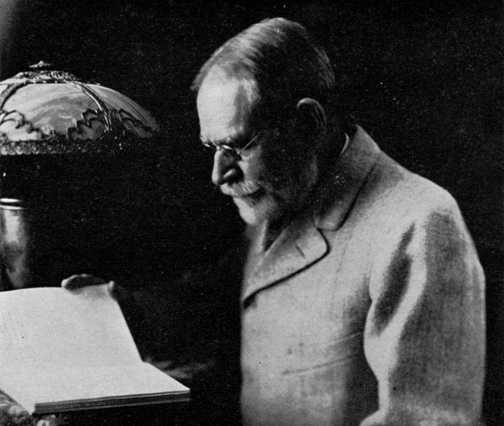
Figure 1.—Charles Sumner Tainter (1854-1940) from a photograph taken in San Diego, California, 1919. (Smithsonian photo 42729-A.)
Meanwhile Bell, always a scientist and experimenter at heart, after his invention of the telephone in 1876 was looking for new worlds to conquer. If we accept Tainter's version of the story, it was through Gardiner Green Hubbard that Bell took up the phonograph challenge. Bell had married Hubbard's daughter Mabel in 1879. Hubbard was then president of the Edison Speaking Phonograph Co., and his organization, which had purchased the Edison patent, was having trouble with its finances because people did not like to buy a machine which seldom worked well and proved difficult for an unskilled person to operate.
In 1879 Hubbard got Bell interested in improving the machine, and it was agreed that a laboratory should be set up in Washington. Experiments were also to be conducted on the transmission of sound by light, and this resulted in the selenium-cell Photophone, patented in 1881. Both the Hubbards and the Bells decided to move to the Capital. While Bell took his bride to Europe for an extended honeymoon, his associate Charles Sumner Tainter, a young instrument maker, was sent on to Washington from Cambridge, Massachusetts, to start the laboratory.[3] Bell's [Pg 72]cousin, Chichester Bell, who had been teaching college chemistry in London, agreed to come as the third associate. During his stay in Europe Bell received the 50,000-franc ($10,000) Volta prize, and it was with this money that the Washington project, the Volta Laboratory Association,[4] was financed.
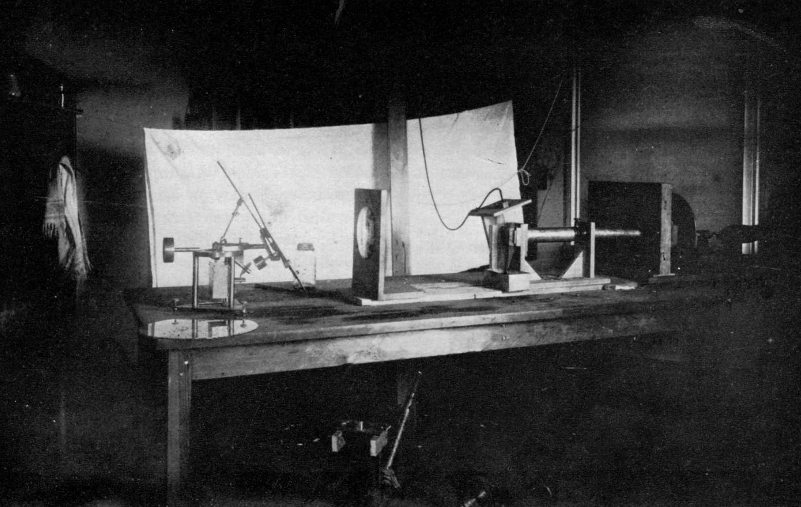
Figure 2.—Photographing Sound in 1884. A rare photograph taken at Volta Laboratory, Washington, D. C., by J. Harris Rogers, a friend of Bell and Tainter (Smithsonian photo 44312-E).
A description of the procedure used is found on page 67, of Tainter's unpublished autobiography (see footnote 1). There, Tainter quotes Chichester Bell as follows:
"A jet of bichromate of potash solution, vibrated by the voice, was directed against a glass plate immediately in front of a slit, on which light was concentrated by means of a lens. The jet was so arranged that the light on its way to the slit had to pass through the nappe and as the thickness of this was constantly changing, the illumination of the slit was also varied. By means of a lens ... an image of this slit was thrown upon a rotating gelatine-bromide plate, on which accordingly a record of the voice vibrations was obtained."
Tainter's story, in his autobiography, of the establishment of the laboratory, shows its comparative simplicity:
I therefore wound up my business affairs in Cambridge, packed up all of my tools and machines, and ... went to Washington, and after much search, rented a vacant house on L Street, between 13th and 14th Streets, and fitted it up for our purpose.[5]... The Smithsonian Institution sent us over a mail sack of scientific books from the library of the Institution, to consult, and primed with all we could learn ... we went to work.[6]... We were like the explorers in an entirely unknown land, where one has to select the path that seems to be most likely to get you to your destination, with no knowledge of what is ahead.
In conducting our work we had first to design an experimental apparatus, then hunt about, often in Philadelphia and New York, for the materials with which to construct it, which were usually hard to find, and finally build the models we needed, ourselves.[7]
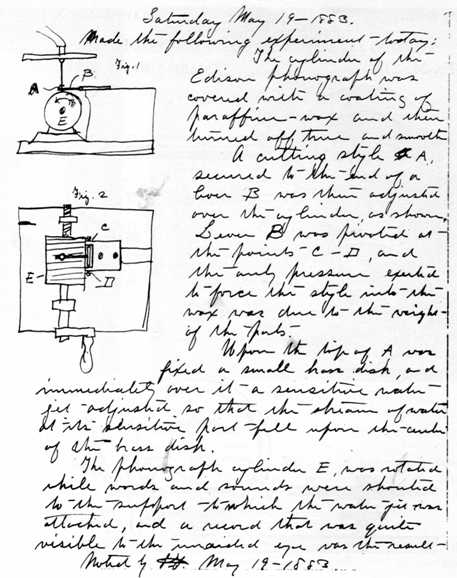
Figure 3.—Page from Notebook of Charles Sumner Tainter, describing an experiment in sound recording. The Tainter notebooks, preserved in the U. S. National Museum, describe experiments at the Volta Laboratory, in the 1880's. The Graphophone patents of 1886, were the result of this research. (Smithsonian photo 44312.)
The experimental machines built at the Volta Laboratory include both disc and cylinder types, and an interesting "tape" recorder. The records used with the machines and now in the collections of the U. S. National Museum, are believed to be the oldest reproducible records preserved anywhere in the world. While some are scratched and cracked, others are still in good condition.
By 1881 the Volta associates had succeeded in improving an Edison tinfoil machine to some extent. Wax was put in the grooves of the heavy iron cylinder, and no tinfoil was used. Rather than apply for a patent at that time, however, they deposited the machine in a sealed box at the Smithsonian, and specified that it was not to be opened without the consent of two of the three men. In 1937 Tainter (fig. 1) was the only one still living, so the box was opened with his permission.
For the occasion, the heirs of Alexander Graham Bell gathered in Washington, but Tainter was too old and too ill to come from San Diego.
The sound vibrations had been indented in the wax which had been applied to the Edison phonograph. The following is the text of the recording: "There are more things in heaven and earth, Horatio, than are dreamed of in your philosophy. I am a graphophone and my mother was a phonograph." Remarked Mrs. Gilbert Grosvenor,[8] Bell's daughter, [Pg 74]when the box was opened in 1937, "That is just the sort of thing father would have said. He was always quoting from the classics."
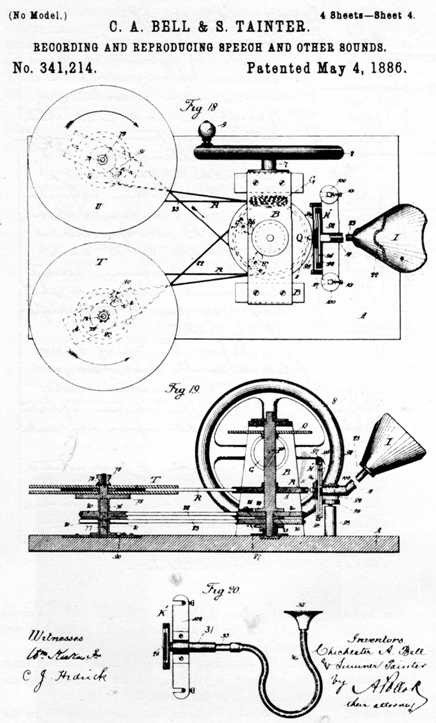
Figure 4.—Patent Drawings from U. S. patent 341214, granted May 4, 1886, to Chichester Bell and C. S. Tainter.
The method of reproduction used on the machine, however, is even more interesting than the quotation. Rather than a stylus and diaphragm, a jet of air under high pressure was used.
"This evening about 7 P. M.," Tainter noted on July 7, 1881, "The apparatus being ready the valve upon the top of the air cylinder was opened slightly until a pressure of about 100 lbs. was indicated by the gage. The phonograph cylinder was then rotated, and the sounds produced by the escaping air could be heard, and the words understood a distance of at[Pg 75] least 8 feet from the phonograph." The point of the jet is glass, and could be directed at a single groove.
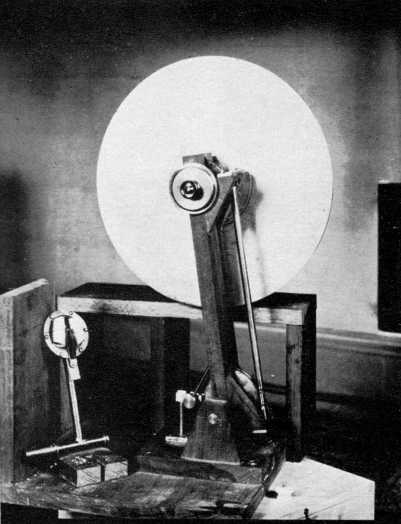
Figure 5.—Experimental Graphophone photographed in 1884 at the Volta Laboratory. This is similar to one preserved at the Smithsonian Institution. (Smithsonian photo 44312-D.)
The other experimental Graphophones indicate an amazing range of experimentation. While the method of cutting a record on wax was the one later exploited commercially, everything else seems to have been tried at least once.
The following was noted on Wednesday, March 20, 1881: "A fountain pen is attached to a diaphragm so as to be vibrated in a plane parallel to the axis of a cylinder—The ink used in this pen to contain iron in a finely divided state, and the pen caused to trace a spiral line around the cylinder as it turned. The cylinder to be covered with a sheet of paper upon which the record is made.... This ink ... can be rendered magnetic by means of a permanent magnet. The sounds were to be reproduced by simply substituting a magnet for the fountain pen...."
The result of these ideas for magnetic reproduction resulted in patent 341287, granted on May 4, 1886; it deals solely with "the reproduction, through the action of magnetism, of sounds by means of records in solid substances."
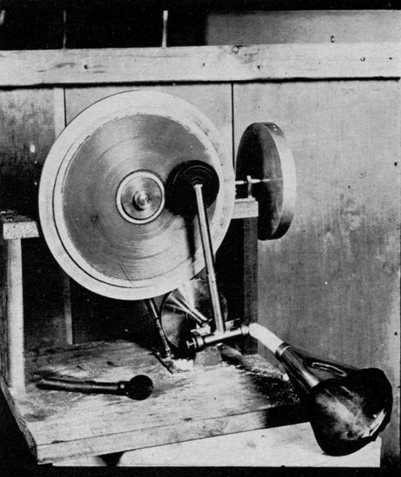
Figure 6.—Another Experimental Graphophone, photographed at the Volta Laboratory in 1884. (Smithsonian photo 44312-F.)
The air jet used in reproducing has already been described. Other jets, of molten metal, wax, and water, were also tried. On Saturday, May 19, 1883, Tainter wrote (see fig. 3):
Made the following experiment today:
The cylinder of the Edison phonograph was covered with the coating of paraffine-wax and then turned off true and smooth.
A cutting style A., secured to the end of a lever B was then adjusted over the cylinder, as shown. Lever B was pivoted at the points C-D, and the only pressure exerted to force the style into the wax was due to the weight of the parts.
Upon the top of A was fixed a small brass disk, and immediately over it a sensitive water jet adjusted, so that the stream of water at its sensitive part fell upon the center of the brass disk.
The Phonograph cylinder E, was rotated while words and sounds were shouted to the support to which the water jet was attached, and a record that was quite visible to the unaided eye was the result.
The tape recorder, an unusual instrument which recorded mechanically on a 3⁄16-inch strip of wax-covered paper, is one of the machines described and illustrated in U. S. patent 341214, dated May 4, 1886 (see fig. 4). The strip was coated by dipping it in a[Pg 76] solution of beeswax and paraffine (one part white beeswax, two parts paraffine, by weight), then scraping one side clean and allowing the other side to harden.
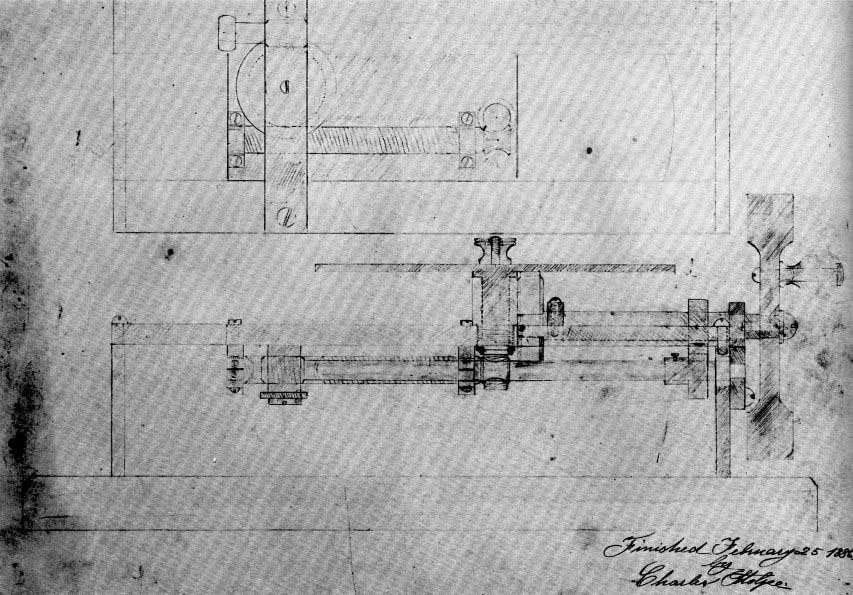
Figure 7.—Original Plans for a Disc Graphophone Patented by Sumner Tainter in 1888, U. S. Patent 385886.
The machine of sturdy wood and metal construction, is hand powered by means of a knob fastened to the fly wheel. From the fly-wheel shaft power is transferred by a small friction wheel to a vertical shaft. At the bottom of this shaft a V-pulley transfers motion by belts to corresponding V-pulleys beneath the horizontal reels.
The wax strip passes from one 8-inch reel around the periphery of a pulley (with guide flanges) mounted above the V-pulleys on the main vertical shaft, where it comes in contact with the recording or reproducing stylus. It is then taken up on the other reel.
The sharp recording stylus, actuated by a vibrating mica diaphragm, cuts the wax from the strip. In reproducing, a dull, loosely mounted stylus, attached to a rubber diaphragm, carried sounds through an ear tube to the listener.
Both recording and reproducing heads, mounted alternately on the same two posts, could be adjusted vertically so that several records could be cut on the same 3⁄16-inch strip.
While this machine was never developed commercially, it is an interesting ancestor of the modern tape recorder, which it resembles somewhat in design. How practical it was or just why it was built we do not know. The tape is now brittle, the heavy paper reels warped, and the reproducing head missing. Otherwise, with some reconditioning, it could be put into working condition.
Most of the disc machines designed by the Volta associates had the disc mounted vertically (see figs. 5 and 6). The explanation is that in the early experiments, the turntable, with disc, was mounted on the shop lathe, along with the recording and reproducing[Pg 77] heads. Later, when the complete models were built, most of them featured vertical turntables.
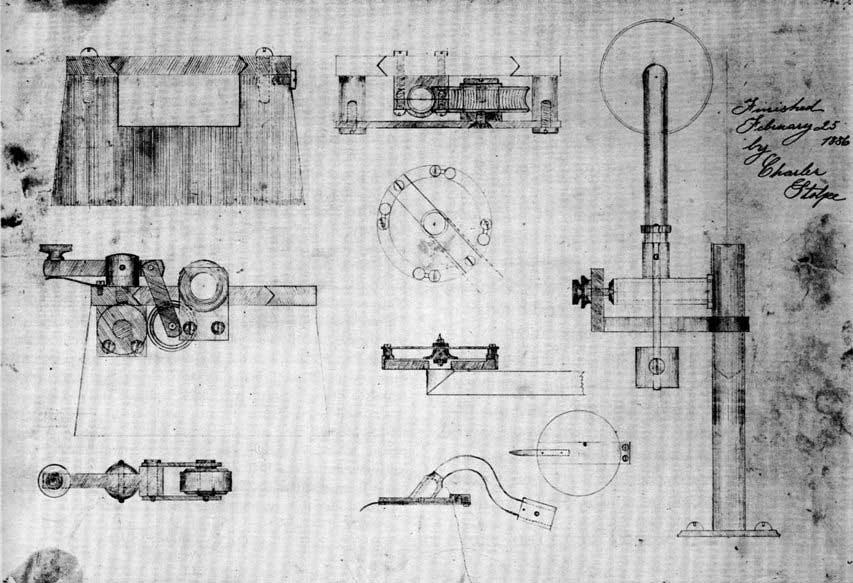
Figure 8.—Another Page of the Plans Shown in Figure 7. The experimental Graphophone built from these plans is in the U. S. National Museum (cat. no. 287665).
An interesting exception has a horizontal 7-inch turntable (see figs. 7 and 8). This machine, although made in 1886, is a duplicate of one made earlier but taken to Europe by Chichester Bell. Tainter was granted U. S. patent 385886 for it on July 10, 1888.
The playing arm is rigid, except for a pivoted vertical motion of 90 degrees to allow removal of the record or a return to starting position. While recording or playing, the record not only rotated, but moved laterally under the stylus, which thus described a spiral, recording 150 grooves to the inch.
The Bell and Tainter records, preserved at the Smithsonian, are both of the lateral cut and "hill-and-dale" types. Edison for many years used the "hill-and-dale" method with both cylinder and disc records, and Emile Berliner is credited with the invention of the lateral cut Gramophone record in 1887. The Volta associates, however, had been experimenting with both types, as early as 1881, as is shown by the following quotation from Tainter:[9]
The record on the electro-type in the Smithsonian package is of the other form, where the vibrations are impressed parallel to the surface of the recording material, as was done in the old Scott Phonautograph of 1857, thus forming a groove of uniform depth, but of wavy character, in which the sides of the groove act upon the tracing point instead of the bottom, as is the case in the vertical type. This form we named the zig-zag form, and referred to it in that way in our notes. Its important advantage in guiding the reproducing needle I first called attention to in the note on p. 9-Vol 1-Home Notes on March 29-1881, and endeavored to use it in my early work, but encountered so much difficulty in getting a form of reproducer that would work with the soft wax records without tearing the groove, we used the hill and valley type of record more often than the other.
[Pg 78]In 1885, when the Volta associates were sure that they had a number of practical inventions, they filed applications for patents. They also began to look around for investors. After giving several demonstrations in Washington, they gained the necessary support, and the American Graphophone Co. was organized to manufacture and sell the machines. The Volta Graphophone Co. was formed to control the patents.
The Howe sewing machine factory at Bridgeport, Connecticut, became the American Graphophone plant; Tainter went there to supervise the manufacturing, and continued his inventive work for many years. This Bridgeport plant is still in use today by a successor firm, the Dictaphone Corporation.
The work of the Volta associates laid the foundation for the successful use of the dictating machine in business, for their wax recording process was practical and their machines sturdy. But it was to take several more years and the renewed work of Edison and further developments by Berliner and many others, before the talking machine industry really got under way and became a major factor in home entertainment.[10]
| Patent Number | Year | Patent | Inventors |
| 229495 | 1880 | Telephone call register | C. S. Tainter |
| 235496 | 1880 | Photophone transmitter | A. G. Bell, C. S. Tainter |
| 235497 | 1880 | Selenium cells | A. G. Bell, C. S. Tainter |
| 235590 | 1800 | Selenium cells | C. S. Tainter |
| 241909 | 1881 | Photophonic receiver | A. G. Bell, C. S. Tainter |
| 243657 | 1881 | Telephone transmitter | C. S. Tainter |
| 289725 | 1883 | Electric conductor | C. S. Tainter |
| 336081 | 1886 | Transmitter for electric telephone lines | C. A. Bell |
| 336082 | 1886 | Jet microphone for transmitting sounds by means of jets | C. A. Bell |
| 336083 | 1886 | Telephone transmitter | C. A. Bell |
| 336173 | 1886 | Telephone transmitter | C. S. Tainter |
| 341212 | 1886 | Reproducing sounds from phonograph records | A. G. Bell, C. A. Bell, C. S. Tainter |
| 341213 | 1886 | Reproducing and recording sounds by radiant energy | A. G. Bell, C. A. Bell, C. S. Tainter |
| 341214 | 1886 | Recording and reproducing speech and other sounds | C. A. Bell, C. S. Tainter |
| 341287 | 1886 | Recording and reproducing sounds | C. S. Tainter |
| 341288 | 1886 | Apparatus for recording and reproducing sounds | C. S. Tainter |
| 374133 | 1887 | Paper cylinder for graphophonic records | C. S. Tainter |
| 375579 | 1887 | Apparatus for recording and reproducing speech and other sounds | C. S. Tainter |
| 380535 | 1888 | Graphophone | C. S. Tainter |
| 385886 | 1888 | Graphophone | C. S. Tainter |
| 385887 | 1888 | Graphophonic tablet | C. S. Tainter |
| 388462 | 1888 | Machine for making paper tubes | C. S. Tainter |
| 392763 | 1888 | Mounting for diaphragms for acoustical instruments | C. S. Tainter |
| 393190 | 1888 | Tablet for use in graphophones | C. S. Tainter |
| 393191 | 1888 | Support for graphophonic tablets | C. S. Tainter |
| 416969 | 1889 | Speed regulator | C. S. Tainter |
| 421450 | 1890 | Graphophone tablet | C. S. Tainter |
| [Pg 79]428646 | 1890 | Machine for the manufacture of wax coated tablets for graphophones | C. S. Tainter |
| 506348 | 1893 | Coin controlled graphophone | C. S. Tainter |
| 510656 | 1893 | Reproducer for graphophones | C. S. Tainter |
| 670442 | 1901 | Graphophone record duplicating machine | C. S. Tainter |
| 730986 | 1903 | Graphophone | C. S. Tainter |
Books (10) containing the home notes, volumes 1 to 8 and 11 and 12, inclusive, March 1881-November 1883. (Vols, 9, 10, and 13 were burned in a laboratory fire, September 1897.)
Binder containing drawings and notes for multiple record duplicator, October 8, 1897-1908, and miscellaneous inquiries, log, telegraph recorder, diet, home plans.
Binder containing printed specifications of patents, S. Tainter, A. G. Bell, and C. A. Bell, June 29, 1880 to June 16, 1903.
Medal, Exposition Internationale d'Electricite, Paris, 1881, marked "Tainter."
Medal, Panama-Pacific Exposition, San Francisco, 1915, Medal of Award.
Seven purple lapel rosettes (?), one with ribbon and palms, in boxes marked "1890." Notes in newspaper clipping.
Records of testimony of C. S. Tainter in various suits involving the phonograph: Volta Graphophone Co. vs. Columbia Phonograph Co., no. 14533, Supreme Court of the District of Columbia, dated January 13, 1894; American Graphophone Co. vs. U. S. Phonograph Co., U. S. Circuit Court, New Jersey, dated May 14, 1895; American Graphophone Co. vs. Edw. H. Amet, U. S. Circuit Court, Northern District, Illinois, in equity, dated February 14, 1896; American Graphophone Co. vs. U. S. Phonograph Co., et al., U. S. Circuit Court, New Jersey, in equity, no date; American Graphophone Co. vs. Leeds et al., U. S. Circuit Court, Two District, New York, N. Y., no date; testimony marked "Questions asked in Edison Co. suits" (duplicate copies) no date, no citation.
Typed manuscript—"Memoirs of Charles Sumner Tainter" (plus many photostats of notes and articles) 4½ inches thick, pp. 1-71 to about 1878, pp. 1 to 104 to factory at Bridgeport, some pages missing.
Box—containing handwritten notes for "memoirs" includes copies of text of above (less photostats); copies of short biography; agreement creating American Graphophone Co.; letter of election to life membership in the American Association for the Advancement of Science.
Binder—exhibits of Tainter drawings in American Graphophone Co. vs. Edison Phonograph Works., vol. 1, U. S. Circuit Court, New Jersey.
Folder—clippings and photostats relating to the machines deposited in Smithsonian.
Certificate of appointment "Officer de l'Instruction publique," France, October 31, 1889, for exhibition of Graphophone, Exposition Universelle, 1889.
Framed photo of Berliner & Tainter, 1919.
Photo of Tainter, 1919.
Separate package containing gold medal, certificate, Panama-Pacific Exposition, San Francisco, 1915; gold medal, certificate, Exposition Internationale Electricite, Paris, 1881.
Footnotes:
[1] Charles Sumner Tainter (1854-1940), "The talking machine and some little known facts in connection with its early development," unpublished manuscript in the collections of the U. S. National Museum.
[2] One of the most interesting prophecies was written in 1656 by Cyrano de Bergerac, in his Comic history of the states and empires of the Moon:
"'I began to study closely my books and their covers which impressed me for their richness. One was decorated with a single diamond, more brilliant by far than ours. The second seemed but a single pearl cleft in twain.
"'When I opened the covers, I found inside something made of metal, not unlike our clocks, full of mysterious little springs and almost invisible mechanisms. 'Tis a book, 'tis true, but a miraculous book, which has no pages or letters. Indeed, 'tis a book which to enjoy the eyes are useless; only ears suffice. When a man desires to read, then, he surrounds this contrivance with many small tendons of every kind, then he places the needle on the chapter to be heard and, at the same time, there come, as from the mouth of a man or from an instrument of music, all those clear and separate sounds which make up the Lunarians' tongue.'" (See A. Coeuroy and G. Clarence, Le phonographe, Paris, 1929, p. 9, 10.)
[3] Tainter retained a lifelong admiration for Alexander Graham Bell. This is Tainter's description of their first meeting in Cambridge: "... one day I received a visit from a very distinguished looking gentleman with jet black hair and beard, who announced himself as Mr. A. Graham Bell. His charm of manner and conversation attracted me greatly...." Tainter, op. cit. (footnote 1), p. 2.
[4] A. G. Bell apparently spent little time in the Volta Laboratory. The Dr. Bell referred to in Tainter's notebooks is Chichester A. Bell. The basic graphophone patent (U. S. patent 341214) was issued to C. A. Bell and Tainter. The Tainter material reveals A. G. Bell as the man who suggested the basic lines of research (and furnished the money), and then allowed his associates to get the credit for many of the inventions that resulted.
[5] Tainter, op. cit. (footnote 1), p. 3.
[6] Ibid., p. 5.
[7] Ibid., p. 30.
[8] As quoted by The Washington Herald, October 28, 1937.
[9] Tainter, op. cit. (footnote 1), pp. 28, 29.
[10] The basic distinction between the first Edison patent, and the Bell and Tainter patent of 1886 was the method of recording. Edison's method was to indent the sound waves on a piece of tin-foil (wax was included as a recording material in his English patent); the Bell and Tainter improvement called for cutting or "engraving" the sound waves into a wax record, with a sharp recording stylus.
The strength of Bell and Tainter patent is indicated by the following excerpt from a letter written by a Washington patent attorney, S. T. Cameron, who was a member of the law firm which carried on litigation for the American Graphophone Co. The letter is dated December 8, 1914, and is addressed to George C. Maynard, Curator of Mechanical Technology, U. S. National Museum: "Subsequent to the issuance of the Bell and Tainter patent No. 341214, Edison announced that he would shortly produce his 'new phonograph' which, when it appeared, was in fact nothing but the Bell and Tainter record set forth in their patent 341214, being a record cut or engraved in wax or wax-like material, although Edison always insisted on calling this record an 'indented' record, doubtless because his original tin-foil record was an 'indented' record. Edison was compelled to acknowledge that his 'new phonograph' was an infringement of the Bell and Tainter patent 341214, and took out a license under the Bell and Tainter patent and made his records under that patent as the result of that license."
Transcriber's Note:
Additional spacing after some of the quotations is intentional to indicate both the end of a quotation and the beginning of a new paragraph as presented in the original text.